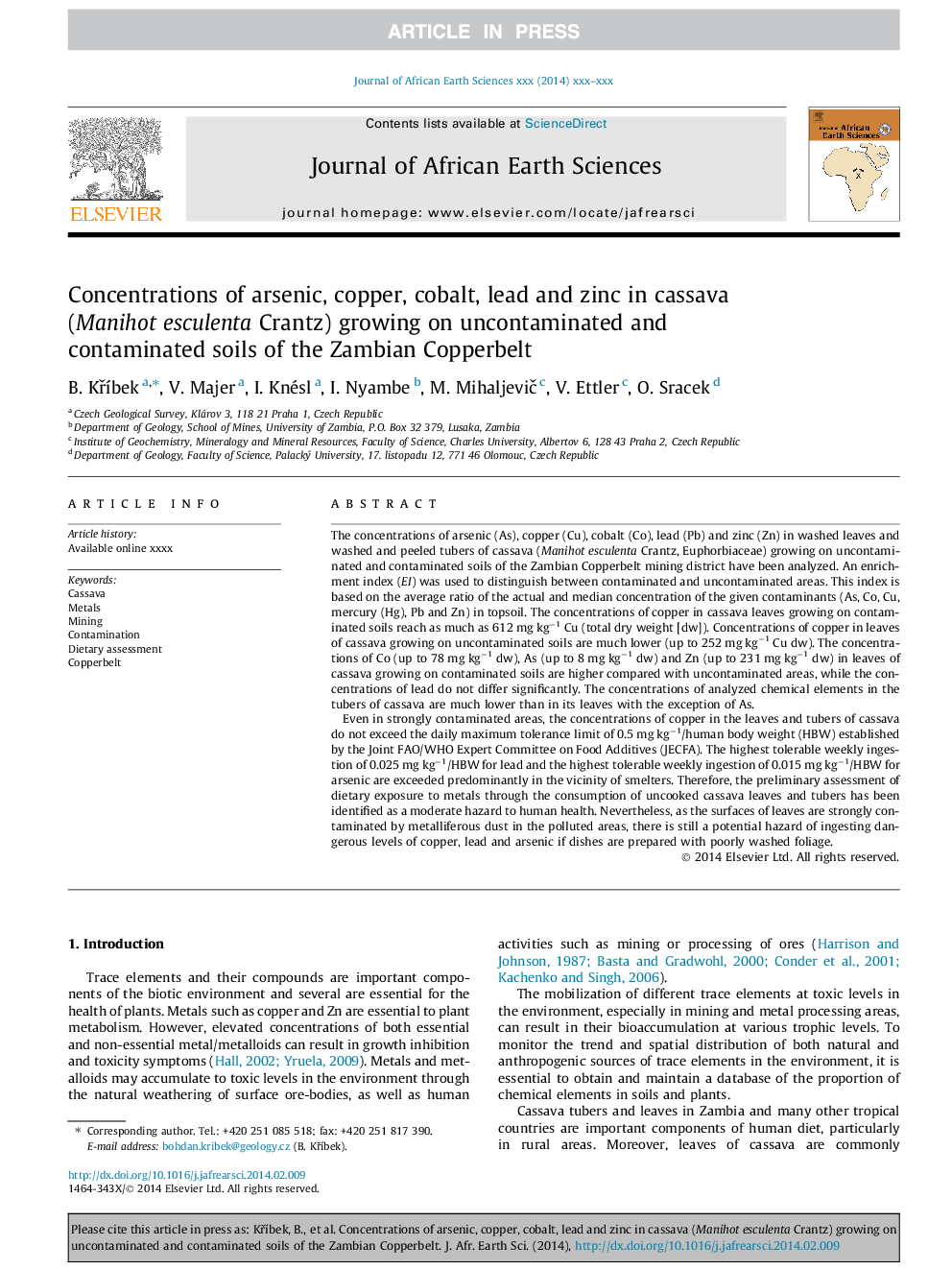| Article ID | Journal | Published Year | Pages | File Type |
|---|---|---|---|---|
| 6443880 | Journal of African Earth Sciences | 2014 | 11 Pages |
Abstract
Even in strongly contaminated areas, the concentrations of copper in the leaves and tubers of cassava do not exceed the daily maximum tolerance limit of 0.5 mg kgâ1/human body weight (HBW) established by the Joint FAO/WHO Expert Committee on Food Additives (JECFA). The highest tolerable weekly ingestion of 0.025 mg kgâ1/HBW for lead and the highest tolerable weekly ingestion of 0.015 mg kgâ1/HBW for arsenic are exceeded predominantly in the vicinity of smelters. Therefore, the preliminary assessment of dietary exposure to metals through the consumption of uncooked cassava leaves and tubers has been identified as a moderate hazard to human health. Nevertheless, as the surfaces of leaves are strongly contaminated by metalliferous dust in the polluted areas, there is still a potential hazard of ingesting dangerous levels of copper, lead and arsenic if dishes are prepared with poorly washed foliage.
Related Topics
Physical Sciences and Engineering
Earth and Planetary Sciences
Geology
Authors
B. KÅÃbek, V. Majer, I. Knésl, I. Nyambe, M. MihaljeviÄ, V. Ettler, O. Sracek,
